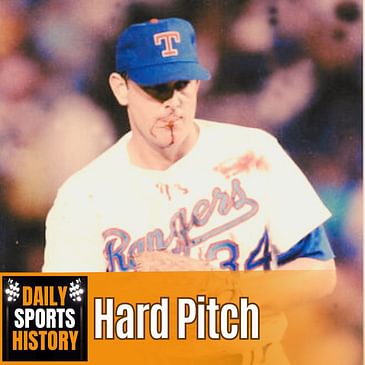Website: dailysportshistory.com
Email: dailysportshistory@gmail.com
YouTube: YouTube.com/@dailysportshistory
Twitter: twitter.com/dailysportshis
Facebook: facebook.com/profile.php?id=61551687917253&mibextid=ZbWKwL
Tiktok: tiktok.com/@daily.sports.history?_t=8hHPnNSCqfm&_r=1
#DailySportsHistory, #NolanRyan, #MLB, #BaseballLegends, #StrikeoutKing, #PitchingGreats, #SportsPodcast, #BaseballHistory, #LegendaryPlayers, #MLBHistory



